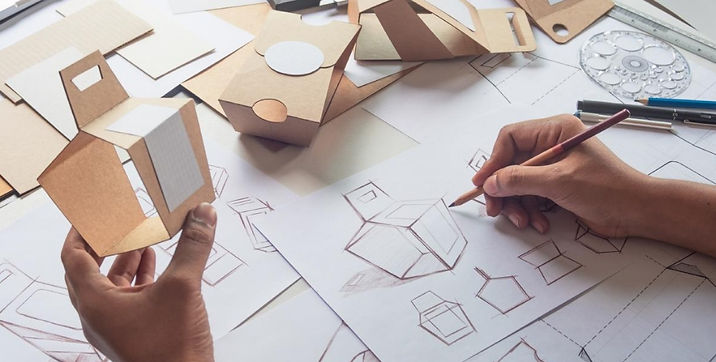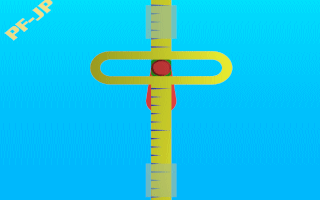

Eco-design : from material to product
Designing a part
Critical learnings
Defining the design of a part based on a product specification, material, and process
Selecting materials that meet a product specification
Selecting materials that meet a product specification
Being an active participant in a project team

Product-Process-Material
By considering the environmental impact
By considering the user's expressed needs
By incorporating existing resources and leveraging the expertise of other stakeholders

1. LCA
Case Study: GreenPoxy resin from Sicomin
Context : During the teaching of bio-based materials in my first year of a university technology degree (BUT), I was assigned a project in a group of two to study the environmental impact of Sicomin's GreenPoxy resin, and to prepare a report and an oral presentation.
Note: The acronym "BUT" stands for "Brevet Universitaire de Technologie," which is a French undergraduate degree program.
Work Done : In order to address the issue, I conducted a bibliography on the resin production process and the material characteristics (mechanical, chemical properties, etc.).
Skills Acquired :
-
Listening - Exchange - Transmission : Numerous phone calls and emails with Sicomin allowed me to become more comfortable in communication with industry professionals.
-
Being an active participant in a project group : I learned to take initiatives and also to compare my research with that of other experts, with the goal of gaining perspective on the expertise of all stakeholders.
-
Reflection on LCA (Life Cycle Assessment) : I learnt an initial approach to understand the environmental impact of a material.
Conclusion :
In my initial approach to study the Life Cycle Assessment (LCA), I was able to conclude that the bio-based GreenPoxy 56 resin does indeed minimize environmental impact. However, it is unfortunate that the resin is not recyclable once it has been polymerized.
Nevertheless, recent research conducted by chemists Lu Lu, Jian Pan, and Guoqiang Li on the transesterification of the epoxy system offers the possibility of potential recycling.
During another project, I was able to assess my first environmental impact. Would you like to know about my approach?
Eco-design ?
Eco-design consists in integrating environmental protection from the early stages of product design. The objective is to reduce the environmental impacts of products throughout their lifecycle : raw material extraction, production, distribution, use, and end-of-life
01 - By considering the environmental impact

The GreenPoxy resin has a lower environmental impact compared to conventional resin.
Regarding eutrophication, the trend is reversed. This is due to the use of pesticides and fertilizers during the cultivation of oilseed crops
In order to analyze the Life Cycle Assessment (LCA) of GreenPoxy resin, I have distinguished
• Upstream processes
(petroleum resource extraction, transportation of resources to refining, production processes...)
• Manufacturing processes
(production of epichlorohydrin from glycerol or propylene, treatment of organic liquid and gaseous waste from epichlorohydrin, wastewater treatment...)
• Downstream processes
(external transportation to manufacturing process, wastewater treatment in treatment plants, transportation and disposal of commercial packaging...)

2.Product - Process - Material
SAE : "Study of Materials and Processes for the Implementation of an Industrial Product."
Context : During the learning situation titled "Study of Materials and Processes for the Implementation of an Industrial Product" in a group of three, I chose the jigsaw as a case study. The objectives of the project were :
-
Establish a carbon footprint of the jigsaw.
-
Understand the relationship between the product, the process, and the material.
-
Select one or two parts of the jigsaw, analyse their purpose, make assumptions about the materials used, and determine the manufacturing method employed.
-
Create a computer-aided design (CAD) drawing of a selected part.
In this project, the goal was to gain a comprehensive understanding of the jigsaw's environmental impact, examine the interplay between the product, the manufacturing process, and the materials used, and apply computer-aided design techniques to create a detailed drawing of a chosen component.
REFLECTIVE APPROACH
As explained above, I dismantled the jigsaw and collected all the components. Each piece was weighed, documented, and then reassembled to reconstruct the jigsaw.
Difficulties
I encountered some difficulties, primarily ensuring that no parts were lost and avoiding measurement errors in mass.
Strategy?
My strategy was to maintain a tidy workspace and perform two measurements for each piece to verify for any potential errors.
What I have learned
I have primarily improved certain skills: organizing my work, being more efficient and proactive, and particularly anticipating future difficulties.
Ma stratégie a été d'avoir un espace de travail rangé, d'effe
01 - evaluate the environmental impact
ECO - MY STRATEGY
To establish a carbon footprint, I assembled and disassembled a jigsaw in order to create a bill of materials (number of parts + mass). Then, I conducted a carbon footprint assessment (LCA) using the ADEME website.
In addition, I independently came up with the idea of creating my own database in the form of a spreadsheet, which I continuously enrich throughout the semesters. This allows me to autonomously develop an LCA, taking into account raw materials, manufacturing, product use, and packaging valorization. To learn more about my spreadsheet, click on the button.
I chose two components: a gear and the blade guide. I researched the possible implementation processes for these components using the following approach
Density calculation
Magnet test
Visual inspection
Analysis of the functions of the components
The results were documented in a benchmarking report and presented orally.
02 - Defining the design of a component by integrating existing elements

3. Material Selection and Design Based on a Design Brief - A Comprehensive Approach
SAE (Learning and Assessment Situation): Design and fabrication of a thermally insulated birdhouse IUT SGM - Group of 4
Context: The initial approach to promote bird reproduction is to create substitute habitats. Facilitating controlled colonization, particularly through the installation of nest boxes, directly contributes to combating the decline of certain bird species. It is within this context that the Learning and Assessment Situation (SAE) "Design and Fabrication of a Prototype" was presented to us. The objective is to design and fabricate a birdhouse that has the particularity of being thermally insulated. For my project, a specific material family, ceramics, has been imposed.
CDC (Customer Design Constraints):
The constraints specified in the CDC, which must be respected, are outlined in the poster shown on the right-hand side
-
Material Choices
-
Natural clay
-
Solid pine wood
-
- Design
- Half-sphere shape, maximum volume to be maintained Attachment point
-
Thermal Constraint
-
Thermal phase shift (thermal lag)
-
Thermal resistance
-
Produit :
le nichoir
Procédé :
CNC / moulage
Matériau :
Argile + pin massif
Benefits of the Learning and Assessment Situation (SAE):
Through this competency, I have improved various aspects of project management:
-
Improved listening, communication, and knowledge sharing: Numerous phone contacts and expert visits have allowed me to become more comfortable in communicating with professionals in the industry.
-
Being an active participant in a project group: I have learned to take initiatives and also to confront my research with that of other experts, with the aim of gaining perspective on the expertise of all team members.
-
Reflection on Life Cycle Assessment (LCA): Increased awareness of an initial approach to the environmental impact of a material.
01 - Choosing a material that meets a Design Brief (CDC)

How to choose a material?
Choosing a material that meets the requirements of a CDC (in this case, I had constraints related to thermal, dimensional, cost, and design aspects), while also considering the associated shaping processes, is not an easy task. To assist me in this process, I adopted the "Performance Index approach" and utilized the CES Edupack software.
For further information, please click on the button
Individual drafting using Solidworks software
Did you mention SW ? Then go ahead and
check out what I accomplished during the practical session

02 - Defining the design

4. Being active in a project group.
During project management courses, I learned about different management styles:
-
Directive management
-
Persuasive management
-
Participative management
-
Delegative management
Focused on achieving results, during the second-year industrial project, I took on the role of project leader to guide my team towards the set objective.
01 - Being an active participant in a project group.

Project management is not an easy task. It requires the ability to question oneself quickly, to listen actively, and to define missions and objectives clearly. In order to avoid making my team overly dependent on my ideas, I changed my management style and adopted a more participative approach to collaboratively develop solutions.




